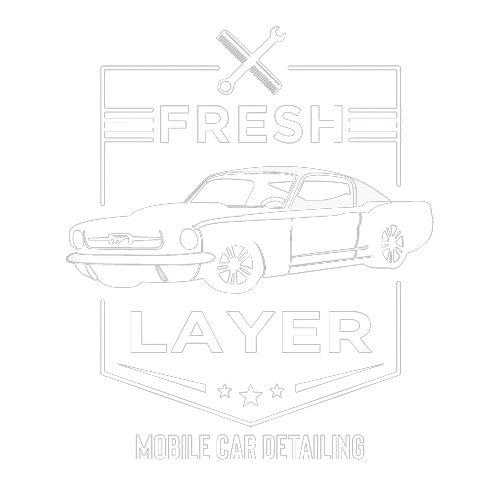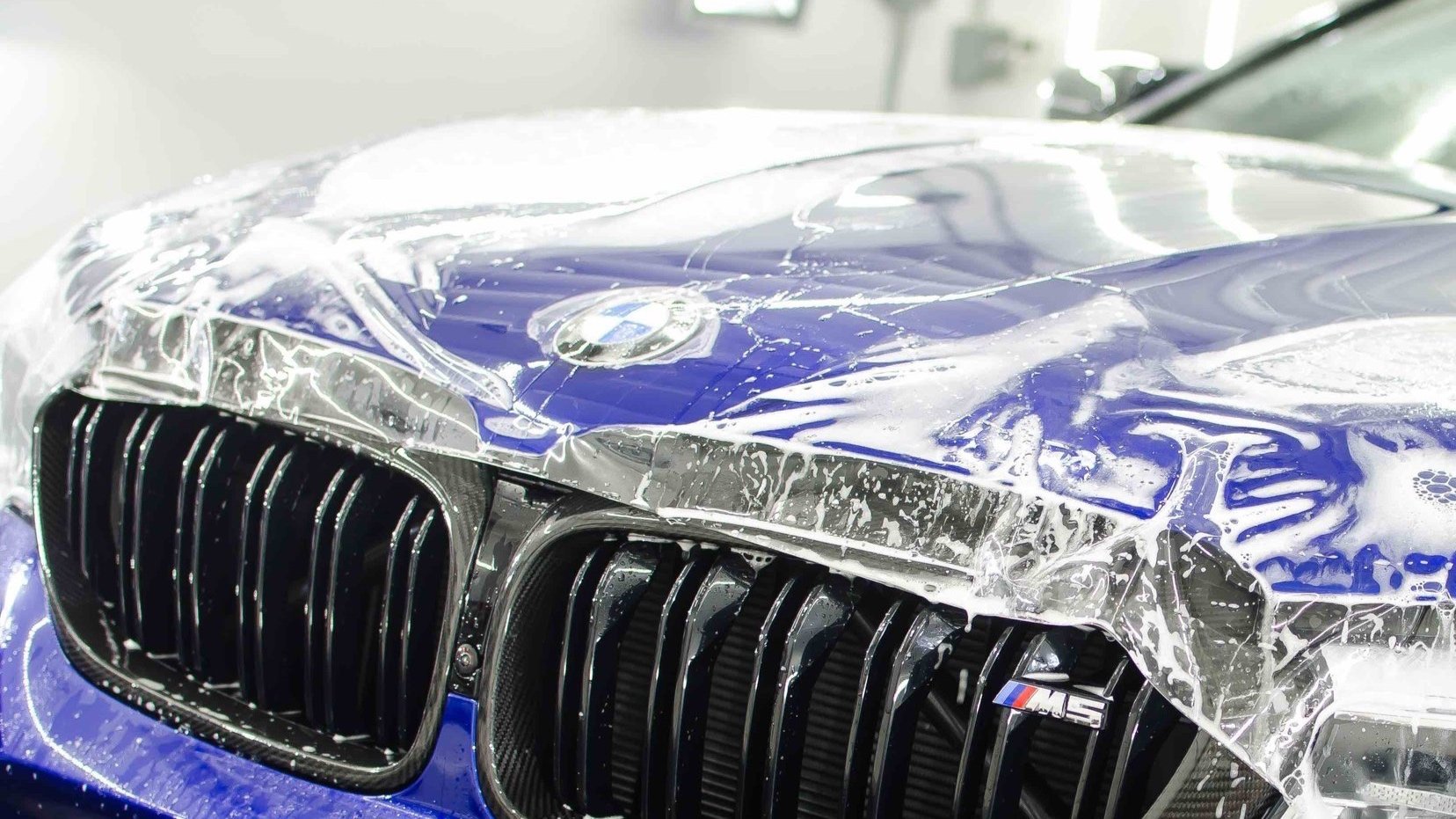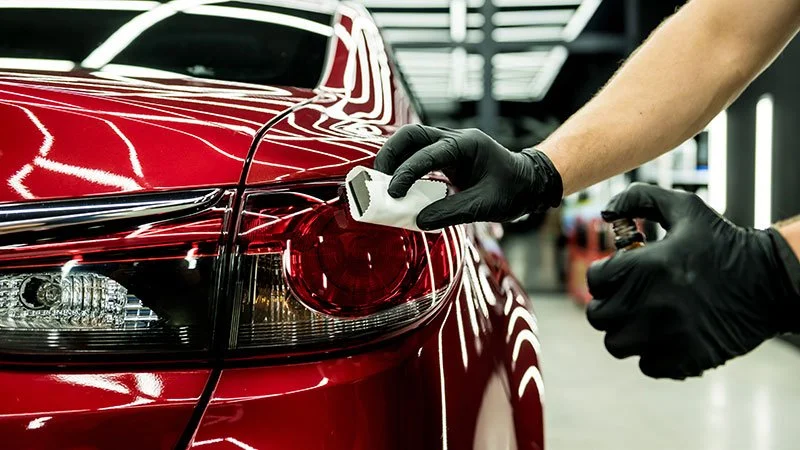PPF vs Ceramic Coating for Cars: A Comprehensive Guide
Why Protection Matters More Than Ever
Did you know that a simple gravel road can launch tiny rocks at your car’s paint at speeds of up to 65 mph, causing micro-chips and permanent blemishes?
With today’s vehicles costing more than ever, safeguarding your paint has become a top priority—especially if you drive in harsh climates or congested urban areas.
Two of the leading contenders for advanced paint protection are PPF (Paint Protection Film) and ceramic coating.
But what’s the difference between PPF vs ceramic coating? And how can you decide which solution is best for your vehicle’s needs, budget, and long-term goals? In this comprehensive guide, we’ll take a deep dive into both technologies.
We’ll discuss how paint protection film or ceramic coating can keep your car looking showroom-ready, highlight real-world examples from the mobile detailing field, and help you navigate key considerations like cost, durability, application processes, and maintenance.
When it comes to protecting your car’s exterior, there's a lot to consider. In this article, we delve into the world of car protection, focusing on two popular options: Paint Protection Film (PPF) and Ceramic Coating. Both have their unique advantages, and understanding these can help you make an informed decision about which is best for your vehicle.
What is PPF (Paint Protection Film)?
PPF, or Paint Protection Film, is a clear, thick film applied to the exterior of a vehicle to protect its paint from scratches, chips, and environmental contaminants.
This film is particularly beneficial for preserving the car's aesthetic appeal and resale value. Key benefits include its self-healing properties and the ability to absorb impacts that might otherwise damage the paint.
Key Features of PPF
Thickness & Self-Healing Properties
Most high-quality PPFs are around 6–8 mils thick. Advanced films offer “self-healing” capabilities, meaning minor swirl marks or scratches disappear with heat (like direct sunlight or warm water).
Invisible Finish
Properly installed PPF is nearly undetectable. It’s designed to preserve your vehicle’s factory color and shine.
High Impact Resistance
The primary advantage of PPF is that it absorbs the brunt of impacts—rocks, road salt, bug splatter—so your underlying paint remains untouched.
When to Consider PPF
Frequent Highway Driving
Long commutes or road trips often mean higher exposure to rocks, dirt, and other debris.
New Cars & Lease Returns
Preserving factory paint can keep resale values high, or protect against lease-end penalties.
High-End Sports or Exotic Cars
Owners of luxury vehicles often invest in PPF to maintain a flawless, collector-grade appearance.
Ceramic Coating refers to a liquid polymer applied to the exterior of a car, which chemically bonds with the vehicle's factory paint to create a protective layer.
This coating enhances the car's appearance by giving it a glossy finish and offers significant advantages like hydrophobic properties, ease of cleaning, and enhanced protection against UV rays and chemical stains.
Key Features of Ceramic Coating
Chemical Bonding
Unlike wax or sealants that simply sit on the paint, ceramic coatings bond at a molecular level for longer-lasting protection (often 1–5 years, depending on the product and maintenance).
Hydrophobic Shield
The slick surface repels water, dirt, and contaminants, making your car easier to clean.
Gloss & Shine
Ceramic coatings amplify the depth and clarity of your paint, giving it a “wet” look that many enthusiasts crave.
When to Consider Ceramic Coating
Daily Drivers
If you want a slick, easy-to-maintain finish that significantly reduces washing time.
Show Cars
Enhances the paint’s gloss for that eye-catching, mirror-like shine at events.
Long-Term Paint Preservation
While ceramic coatings don’t stop rock chips, they do slow paint oxidation, fade, and water-spot etching.
Comparing PPF and Ceramic Coating
Protection Level
PPF offers a higher level of physical protection against impacts and scratches, whereas Ceramic Coating excels in protecting against chemical stains and UV rays. PPF acts as a barrier, while Ceramic Coating provides a shield against surface-level issues.
Durability
In terms of durability, PPF generally lasts longer, often up to 10 years, compared to Ceramic Coating, which may need reapplication every 2-5 years depending on the quality and maintenance.
Maintenance
Both require maintenance, but PPF might need more attention due to its physical protective nature. Ceramic Coating is easier to maintain due to its hydrophobic properties that reduce dirt and grime adherence.
Cost Comparison
PPF is typically more expensive due to the material cost and labor-intensive installation. Ceramic Coating, while still a premium service, generally comes in at a lower price point.
Pros and Cons of PPF and Ceramic Coating
PPF vs Ceramic Coating: The Core Differences
Many car owners ask, “ppf vs ceramic coating—what’s better?” The truth is, they serve different protective functions. Let’s break down the key distinctions to help you choose the right solution for your lifestyle and budget.
1. Physical Barrier vs Chemical Shield
Paint Protection Film (PPF)
Acts as a physical barrier, absorbing impacts. If a rock hits your car at high speed, the PPF layer takes the brunt, leaving your paint intact.
Ceramic Coating
Provides a chemical barrier against contaminants, UV rays, and minor abrasions. However, it’s not thick enough to fully prevent chips from more substantial impacts.
2. Visual Enhancement
PPF
Modern PPF is transparent and can be glossy or matte, but it doesn’t necessarily “amplify” gloss. Instead, it preserves the existing paint finish. Some matte PPFs can change the look if that’s what you desire.
Ceramic Coating
Typically adds noticeable depth and shine, giving your car a freshly detailed look 24/7.
3. Self-Healing Capabilities
PPF
Premium brands (like XPEL, 3M, or SunTek) often feature self-healing topcoats that reduce surface-level swirl marks.
Ceramic Coating
Doesn’t self-heal. Once scratched, the coating can show marks unless re-polished and reapplied.
4. Lifespan & Maintenance
PPF
Can last 5–10 years, depending on the brand, conditions, and care. Typically requires routine washes but not specialized maintenance beyond occasional checkups.
Ceramic Coating
Can last 1–5 years, depending on product grade and maintenance. Requires proper washing techniques to preserve hydrophobic properties.
5. Cost Implications
PPF
Typically more expensive upfront due to the complexity of installation. Full-vehicle coverage can range from $2,000 to $7,000 or more.
Ceramic Coating
Prices vary from $600 to $2,000+ for pro-level coatings. Less expensive than PPF overall, but can’t shield against rock chips effectively.
Ceramic Coating vs Paint Protection Film: Real-World Examples
To illustrate how these technologies fare in everyday scenarios, let’s examine two real-world cases from my mobile detailing career.
Case Study 1: Off-Road Adventurer
Vehicle: 2023 Toyota 4Runner TRD Pro
Owner’s Concerns: Frequent gravel roads, muddy trails, and potential for paint scratches.
Solution: Full-front PPF coverage (hood, fenders, bumper) plus partial door coverage. A ceramic coating was applied over the exposed paint sections and on top of the PPF for a uniform finish.
Outcome: The PPF absorbed multiple rock impacts with zero paint damage. The ceramic coating made routine washes quick and easy, especially after muddy excursions. The vehicle still looks nearly new after 12 months of rough usage.
Case Study 2: City Commuter
Vehicle: 2021 Audi A4
Owner’s Concerns: Urban grime, air pollution, water spots, minor swirl marks.
Solution: Ceramic coating only, focusing on paint, rims, and glass surfaces.
Outcome: The A4’s paint remains free of oxidation and is significantly easier to wash. However, minor chips appeared on the front bumper after winter highway driving. If rock chips are a major worry, the owner might consider partial PPF in addition to the ceramic coating.
Application Process of PPF and Ceramic Coating
Applying PPF involves cleaning the car thoroughly, precisely cutting the film to fit, and applying it meticulously to avoid bubbles and misalignment.
The Ceramic Coating process includes a deep clean, often a paint correction, and then the application of the coating, which needs to cure for optimal performance.
Maintenance Tips for PPF and Ceramic Coating
Maintaining PPF involves regular cleaning and avoiding harsh chemicals. For Ceramic Coating, regular washing and avoiding abrasive materials will prolong its life and look.
How To Wash Ceramic Coating
You can find more tips how to wash your ceramic coated car in our blog post
Cost Analysis: PPF vs Ceramic Coating
The cost of PPF and Ceramic Coating varies based on factors like car size, product quality, and labor costs.
PPF is generally more expensive initially but offers long-term savings by protecting the car’s paint for longer.
PPF usually starts at $4000 for sedan where is ceramic coating can starts at $900 for sedan.
Paint Protection Film or Ceramic Coating: Which Lasts Longer?
The question of “paint protection film or ceramic coating” often includes concerns about durability.
While both solutions can last for years, PPF generally outlives ceramic coatings. Many high-quality PPF brands offer warranties ranging from 5 to 10 years, assuming proper care.
Ceramic coatings vary from short-term consumer-grade products (roughly 12 months) to advanced professional installations guaranteed for up to 5 years.
However, even the best ceramic coatings can degrade prematurely if neglected or incorrectly washed.
Protecting Your Investment
PPF Maintenance:
Regular hand washing or gentle touchless methods are recommended. Avoid harsh chemicals that could degrade the film’s adhesive.
Ceramic Coating Maintenance:
pH-neutral car shampoos, microfiber towels, and annual checkups to “top off” hydrophobic properties go a long way.
Ceramic vs PPF: The Hydrophobic Factor
One of the hottest debates in ceramic vs ppf discussions revolves around water beading, or hydrophobicity. While some modern PPF products come with hydrophobic coatings, ceramic coatings are renowned for their water and dirt-repellent properties.
Water Beading Performance
PPF Alone
Standard PPF surfaces may shed water decently, but not as effectively as a dedicated ceramic coating.
Ceramic Coating
Exemplary water beading and sheeting properties. Dirt and grime struggle to adhere, simplifying wash routines.
For drivers who love that “just waxed” look, the best solution could be layering: applying ceramic coating ppf synergy for both physical protection and top-tier hydrophobicity.
Ceramic Coating or PPF: Which Is More Cost-Effective?
If you’re grappling with “ceramic coating or ppf?” you’ll want to consider both upfront and long-term costs.
Upfront Costs
PPF
Partial coverage (front bumper, hood) may start around $800–$1,500. Full coverage can range from $2,000–$7,000+.
Ceramic Coating
Entry-level pro-grade coating packages might run $600–$1,000, while premium multi-layer coatings can exceed $2,000.
Long-Term Value
PPF
Potential to save thousands in repainting or bodywork costs after unavoidable impacts or door dings.
Ceramic Coating
Lowers the frequency and complexity of washing. You’ll likely save on detailing products and time over the coating’s lifespan.
Pro Tip from the Field
If you’re on a tight budget but primarily concerned about rock chips on the front end, opt for a partial PPF wrap(covering the vulnerable areas) and a ceramic coating on the rest. This hybrid approach balances cost with comprehensive protection.
What’s Better? Ceramic Coating or PPF?
Here’s the good news. You don’t have to choose one or the other.
They can both be applied to the same vehicle. The dynamic duo of Paint Protection Film and a Ceramic Coating is the ultimate form of invisible protection you can purchase for your car.
Here’s how it works.
Paint Protection Film is applied first to the portions of your vehicle that will be most susceptible to rock chips or scratches from road debris.
Since a Ceramic Coating does not protect against this kind of damage, it’s important to apply Paint Protection Film to these areas.
This often includes the front bumper, hood, fenders, side mirrors, rocker panels, and rear wheel arch.
Once the most vulnerable areas are protected with Paint Protection Film, your whole car receives a Ceramic Coating.
The coating will bond to both the vehicle’s factory paint and the film that has already been applied.
When applied on top of film, coating will provide an additional layer of protection from chemical etching and stains. It will also help keep the film clean and free from contaminants, which will lengthen the life of the film.
PPF vs Ceramic: Installation Differences
Installation is another critical aspect of ppf vs ceramic decision-making. Both require a controlled environment, but the skill sets and labor are quite distinct.
PPF Installation
Paint Decontamination: Washing, claying, and polishing if necessary to remove swirl marks or paint imperfections.
Precise Cutting & Alignment: PPF is cut to match specific vehicle panels. Some detailers use computer-generated patterns for a precise fit.
Application with Slip Solution: The film is applied using soapy water or a specialized slip solution, then squeegeed to remove air bubbles.
Edge Wrapping: For a seamless finish, edges may be tucked around body panels where possible.
Ceramic Coating Installation
Paint Correction: Because coatings lock in a paint’s appearance, detailers may perform paint correction to eliminate swirl marks or scratches.
Panel Wipe: A solvent-based prep spray removes polishing oils, ensuring maximum coating adhesion.
Application: The coating is applied in small sections, leveled with microfiber applicators, and then buffed after a recommended flash time.
Curing: Some coatings cure within hours, while others may require up to 48 hours in stable temperature and humidity conditions.
Ceramic Coating vs PPF Wrap: Can They Be Combined?
Absolutely. Many detailers offer ceramic coating and ppf bundles to provide the ultimate defense and aesthetics. Typically, the PPF is installed first, and once it has settled (often 24–48 hours), a ceramic coating is applied over it. This “stacked” approach merges the best of both worlds:
Physical Impact Resistance from the film
Enhanced Gloss & Hydrophobicity from the coating
Combining ceramic coating vs ppf wrap can be especially beneficial if you’re looking to protect the entire car while ensuring minimal maintenance. Some premium film brands even come pre-treated with ceramic-like topcoats, though many professionals still prefer applying a dedicated, high-quality coating.
FAQs on PPF and Ceramic Coating
-
PPF typically lasts between 5 to 10 years, depending on the quality of the film and the conditions to which your car is exposed. Ceramic Coatings can last anywhere from 2 to 5 years, with some premium coatings claiming to last even longer with proper maintenance.
-
PPF installation generally requires professional installation due to the precision needed to apply the film without bubbles or misalignment. Ceramic Coating can be a DIY project; however, it requires thorough preparation and careful application to avoid streaks or uneven layers. For both options, professional application is recommended for the best and most durable results.
-
Choose PPF if you're looking for maximum protection against physical damage such as chips, scratches, and environmental elements. Opt for Ceramic Coating if your priority is making your car easier to clean and enhancing its gloss and shine. Your decision may also depend on your environment, the conditions under which you drive, and how you use your car.
-
For PPF, regular washing and occasional waxing are recommended to maintain the film's clarity and self-healing properties. With Ceramic Coatings, you should avoid waxing, as it can interfere with the hydrophobic qualities, but regular washing with pH-neutral soaps is essential to maintain its protective properties.
-
Both PPF and Ceramic Coating can potentially increase your car's resale value by preserving the paint's original condition. By protecting the paint from damage and aging, these products keep your car looking newer for longer, which is a selling point for future buyers.
Common Myths in Ceramic Coating and PPF
Misconceptions abound when choosing between ceramic coating or ppf. Let’s dispel a few:
Myth: “Ceramic Coating Prevents Rock Chips.”
Fact: Coatings aren’t thick enough to absorb high-impact debris. They do protect against minor scuffs and contamination, but not major chips.
Myth: “PPF Will Ruin My Paint When Removed.”
Fact: High-quality films, when professionally removed, do not damage the factory paint if the adhesive is still in good condition.
Myth: “Ceramic Coating Replaces Regular Washing.”
Fact: You still need to wash, but the frequency and effort are reduced.
Myth: “PPF Always Yellows Over Time.”
Fact: Early generations of cheaper film could yellow, but most modern premium PPF brands incorporate UV inhibitors to stay clear for years.
Conclusion—Finding the Perfect Protective Solution
When it comes down to “ceramic coating vs ppf,” there’s no single best answer for every vehicle or driver. Instead, consider how you use your car, what kind of risks it faces, and how much you’re willing to invest in upfront and ongoing maintenance.
If you frequently drive on highways or rough roads:
Paint protection film offers unmatched defense against chips and scratches.
If your primary goal is minimal maintenance and maximum gloss:
Ceramic coating delivers a brilliant finish and easier cleaning routine.
For comprehensive protection:
A combined approach—PPF on high-impact areas and a ceramic coating for the rest—is often the ultimate solution.
Whether you’re a daily commuter, off-road enthusiast, or weekend show car buff, these advanced options can preserve your car’s finish for years to come. At the end of the day, investing in either ceramic coating or ppf is far more cost-effective than neglecting your paint’s well-being—especially in an era of skyrocketing vehicle prices and paint repair costs.









